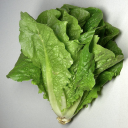Search
About Lactuca sativa
Lettuce (Lactuca sativa L.) is an important vegetable crop species and is widely consumed as salad greens in many countries. It was first depicted on wall paintings of Egyptian tombs around 2,500 BC, making it one of the oldest known vegetable crops. It is believed that cultivated lettuce was domesticated from its progenitor L. serriola, and several hypotheses were proposed regarding the domestication center of lettuce, including Egypt, the Mediterranean area, the Middle East and Southwest Asia. Lettuce belongs to Compositae (also known as Asteraceae) family which is the most successful family of flowering plants on earth in terms of number of species and diversity of habitats colonized. The family is thought to have originated in the mid-Eocene (45–49 Myr) and expanded greatly during the Oligocene (28–36 Myr). It encompasses 1,620 recognized genera and at least 23,600 species, constituting approximately 10% of all angiosperms. L. sativa is diploid with 2n=2x=18 chromosomes and an estimated genome size of 2.5 Gb.
Taxonomy ID 4236
Data source LGSC
Comparative genomics
What can I find? Homologues, gene trees, and whole genome alignments across multiple species.
 More about comparative analyses
More about comparative analyses
 Phylogenetic overview of gene families
Phylogenetic overview of gene families
 Download alignments (EMF)
Download alignments (EMF)






 Display your data in Ensembl Plants
Display your data in Ensembl Plants

 Update your old Ensembl IDs
Update your old Ensembl IDs


![Follow us on Twitter! [twitter logo]](/i/twitter.png)
